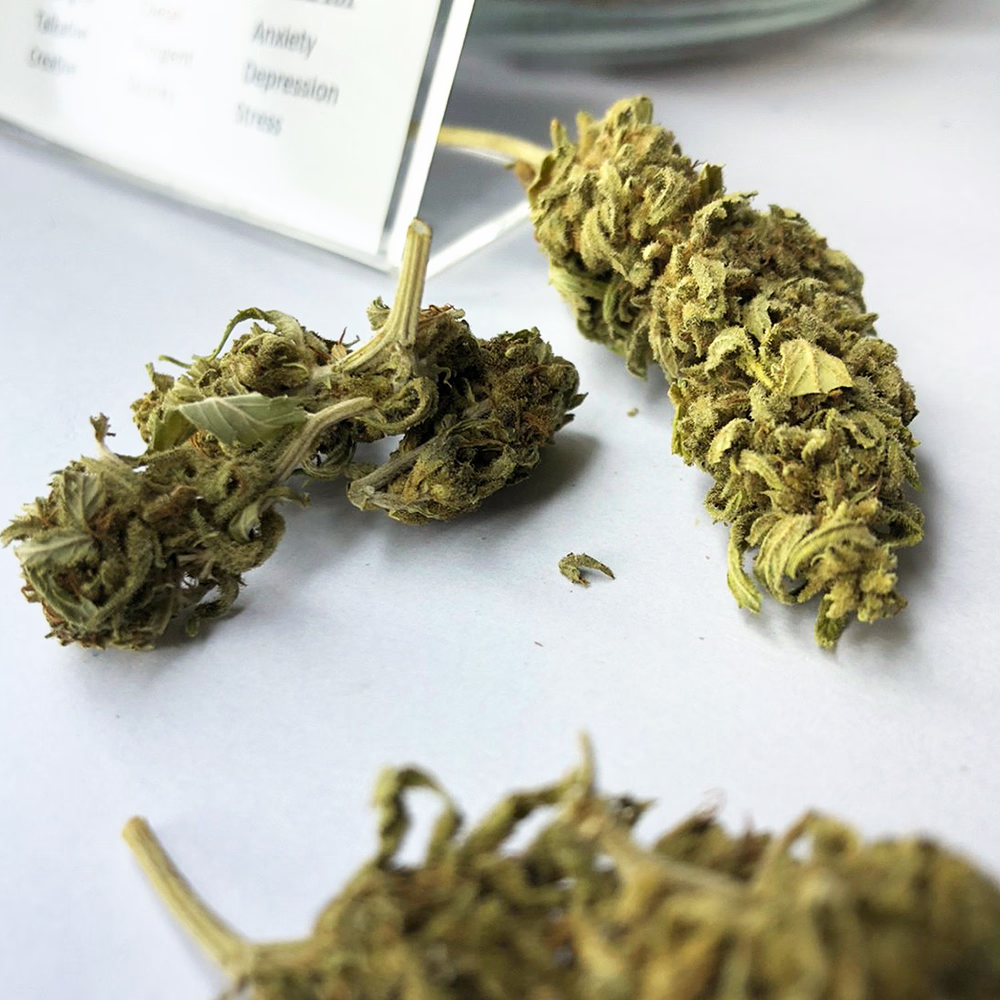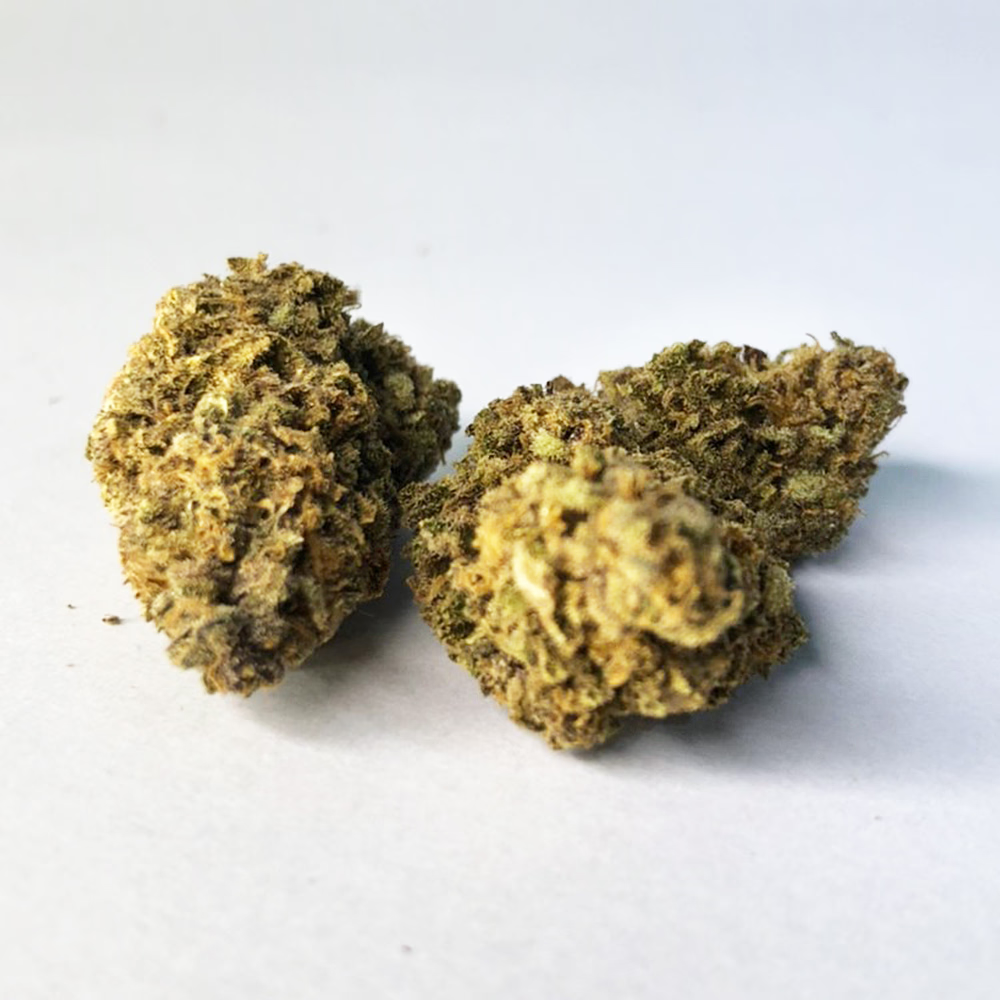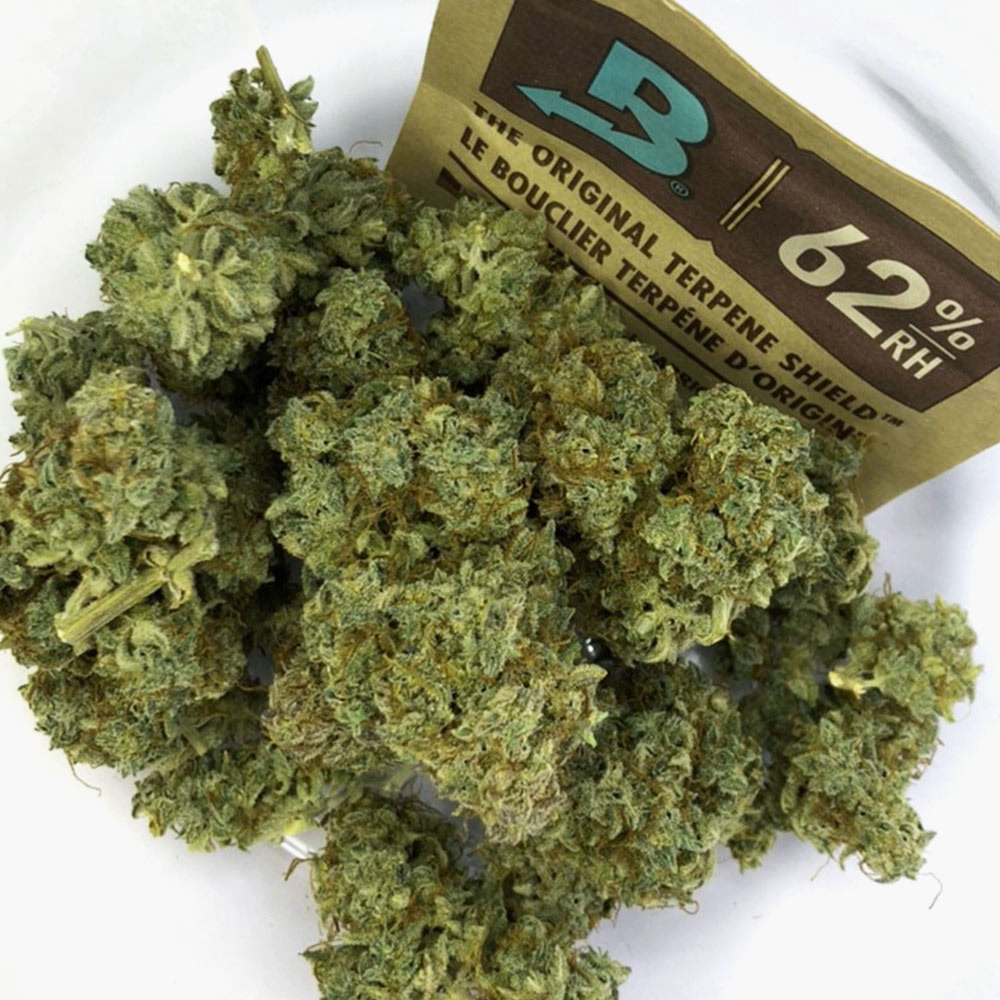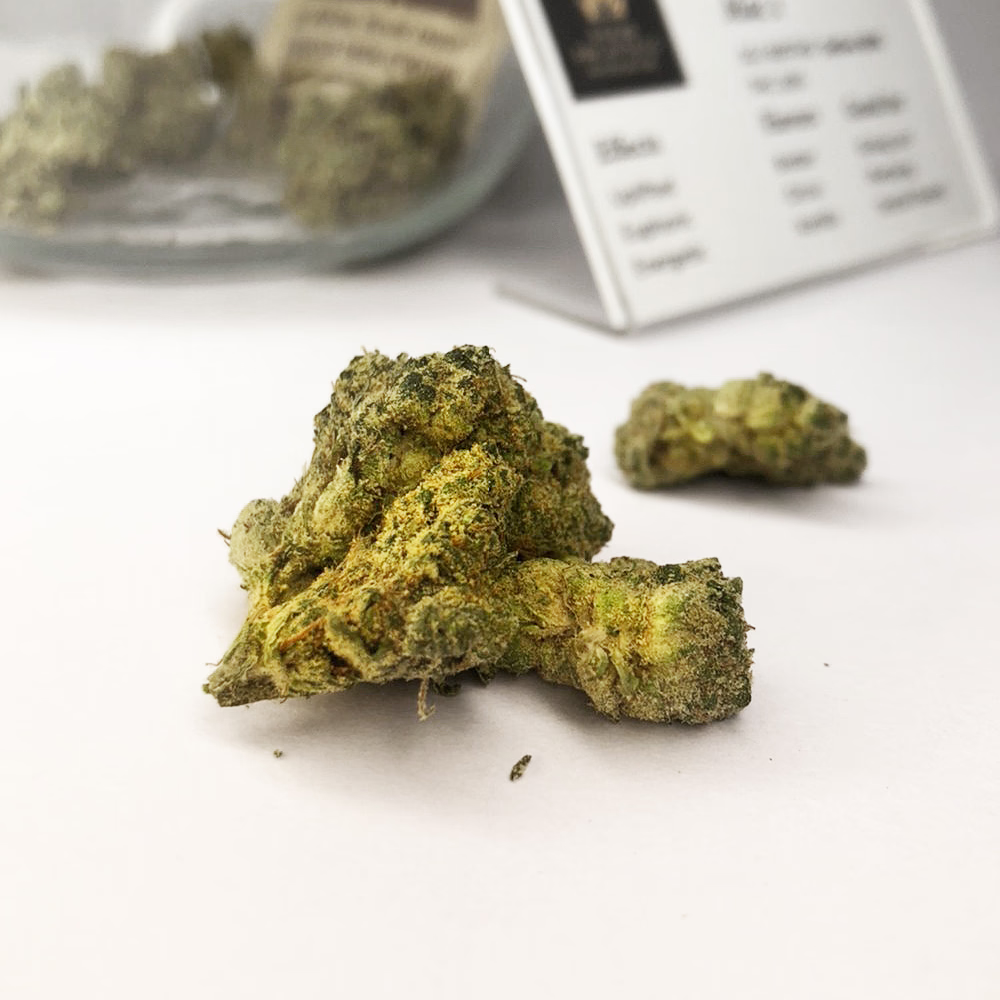Powdery Mildew on Cannabis
Using natural remedies to treat and eradicate powdery mildew
Controlling Humidity Levels to Lower the Risk of Cannabis Powdery Mildew Development
Considering the Use of Natural and Synthetic Fungicides to Treat PM on Cannabis Plants
Cannabis farmers are too familiar with the heartbreak and agony of watching their plants die from powdery mildew. This fungus is one of the most prevalent diseases affecting cannabis crops, but it can be efficiently managed with some knowledge and preventative measures.
How to Combat Powdery Mildew on Cannabis Plants. Numerous species of fungi belonging to the order Erysiphales, including those from the genera Podosphaera, Oidiopsis, Phyllactinia, Golovinomyces, Leveillula, and Microsphaerotheca, are responsible for powdery mildew. The fungus flourishes in moist conditions with temperatures between 68°F and 86°F (20°C and 30°C) with no air movement.
When these circumstances exist, they appear on plant leaves as white, powdery spots that later turn yellow or brown as the infection develops. In severe circumstances, this might result in leaf curling and withering, stem mortality, and a decreased harvest yield because of spore-covered buds.
Preventative measures are the best method to deal with powdery mildew before it becomes an issue! Avoid overcrowding plants, make sure your garden environment has adequate air circulation, reduce humidity levels when you can, and keep your grow area clean by regularly removing dead leaves or other debris to prevent them from acting as an incubator for spores.
Check your cannabis plants frequently for signs of powdery mildew, such as white patches on leaves or stems. If you find any affected regions, separate them from healthy sections of the crop to prevent the disease from spreading to other parts of your garden.
Chemical management may be necessary for severe infestations; licensed fungicides are on the market, but use caution since some can harm or damage both people and plants when used improperly or excessively. When working with cannabis plants that have powdery mildew, it's also crucial to maintain appropriate hygiene. Wash your hands thoroughly after contacting infected material (which should be disposed of carefully).
Additionally, natural treatments like neem oil have been demonstrated to be effective against a variety of fungi, including those brought on by specific strains of powdery mildew, so you might want to try them out before turning to more potentially dangerous chemicals.
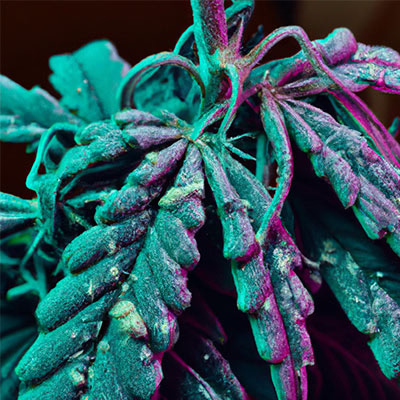
How to Treat And Cure Powdery Mildew on Cannabis
Powdery Mildew on Cannabis. Cannabis growers frequently encounter powdery mildew, but it doesn't have to be a severe setback. Your crop can be saved if powdery mildew is identified and treated quickly. Here are some recommendations for treating and curing powdery mildew on marijuana:
Identify the Issue - Determining the type of disease afflicting the plant is the first step in treating it. Powdery mildew appears as white or gray dust patches on leaves and buds. As the virus spreads, it usually starts at the top of the plant and moves down. Regularly inspect your plants to catch any infection-related symptoms early.
Increase Air Circulation - Increasing air circulation around your plants is one of the best strategies to stop powdery mildew from growing in your growing space. Make sure there is enough space between each one to allow for easy airflow, and if necessary, think about utilizing fans or other ventilation systems.
Increase Light Levels - By boosting your plants' natural defenses against pathogens like fungi and bacteria, increasing the light levels in your grow area may also help lower the danger of powdery mildew infections.
To reach the ideal illumination levels for healthy growth without scorching delicate leaves or buds, use LED lights with adjustable intensities or take advantage of natural sunshine whenever available.
Eliminate Infected Plants And Leaves - Although this should only be done after identifying signs of an infestation because removing too many healthy parts could weaken overall plant health even further than having an isolated fungal outbreak would do alone, removing infected leaves will stop further spread reducing sources for spores to reproduce from.
Additionally, if whole plants are affected, they must be removed entirely to prevent nearby natural plant contamination. Just be careful not to compost them unless you're sure all traces have been eliminated before disposal, or you risk spreading more spores back into the environment again down the road!
Use prevention sprays. These sprays are excellent at stopping new outbreaks without harming beneficial insects like bees, which may frequently visit flowers during the flowering stage (it's always important to remember our little friends!). Many different types of prevention sprays on the market contain ingredients like sulfur.
Providing the infestations aren't too severe, these treatments will also help manage them. Just read the directions thoroughly before applying them, so you'll know precisely what ratio to combine without running the risk of harming yourself or your priceless crops.
Fungicides should only be used as a last resort because they may harm beneficial microorganisms living in the soil alongside pests, potentially causing long-term damage to the ecosystem. Always double-check labels to ensure products contain active ingredients that are proven effective in treating particular fungus types.
Monitor Progress- Last, keep an eye on your progress during therapy to ensure everything is going as planned and that you eventually get your desired results. Pay attention to both bodily changes.
A nutrient deficiency-related change in leaf color and an increase in fresh-looking foliage indicate that an unwelcome guest or guests have been successfully eliminated.
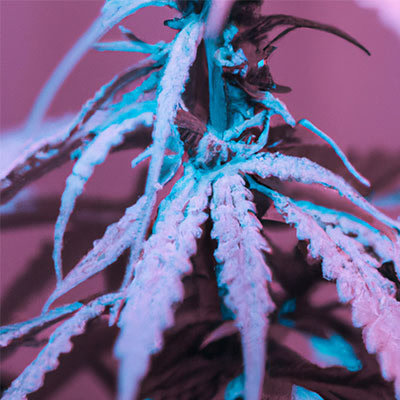
Using natural remedies to treat and eradicate powdery mildew
Cannabis plants are susceptible to powdery mildew, a common fungal disease affecting many plant species. While powdery mildew in your cannabis growth operation can be detrimental to your crop, you can treat and eliminate it using natural methods.
We'll go over some of the top all-natural treatments and preventative measures for powdery mildew in your cannabis garden in this article.
Neem Oil: Neem oil is a potent pesticide and fungicide used for centuries to control pests and fungi on crops. Neem oil is an organic chemical that is obtained from the neem tree. It is also effective at treating powdery mildew on cannabis plants due to its antifungal qualities.
Neem oil can treat powdery mildew by combining one teaspoon with one quart of water, adding a few drops of liquid dish detergent or horticultural oil as an emulsifier, and then vigorously spraying the problematic regions.
Baking Soda: Due to its capacity to elevate the pH level in soil, which prevents fungus growth like powdery mildew, baking soda is another fantastic natural cure for treating powdery mildew on cannabis plants.
Spray sick plant leaves with two tablespoons of baking soda diluted in a gallon of water until they are completely covered but not dripping with it (overwatering may cause additional damage).
Hydrogen Peroxide: Hydrogen peroxide is another valuable weapon for battling many ailments that might impact your marijuana crops, such as root rot, gray mold, and even spider mites. However, it also works wonders against powdery mildews.
Spray immediately over diseased areas twice daily with a mixture of four tablespoons and one gallon of water until symptoms subside (this could take up to 10 days).
Garlic Extract: Did you know garlic extract can help guard against any potential infections brought on by powdery mildews? Garlic extract is another fantastic natural solution for fungal issues like whiteflies and aphids.
Simply combine five minced garlic cloves with three cups warm water, filter out the contents with cheesecloth or paper towels, and then spritz the mixture directly over the problematic region once every three days until the issue is entirely resolved!
Sulfur Sprays: Sulfur sprays are a staple of integrated pest management programs used by farmers worldwide. Sulfur sprays also kill off various fungi, including those that cause Powder Mildew in marijuana crops.
Apply sulfur sprays only during dry weather (when humidity levels are below 85%) at least twice weekly over many weeks to ensure complete eradication/prevention from subsequent outbreaks.
Potassium Bicarbonate Sprays: Potassium bicarbonate sprays are yet another fantastic solution for problems involving powdery mildews, especially since they offer therapeutic and preventative actions against this troublesome fungus.
Apply the mixture twice weekly to foliage by combining 2 12 teaspoons potassium bicarbonate (or food-grade baking soda) with 1 liter warm water. Please note that applications should be delayed if the outside temperature exceeds 80°F to prevent scorching sensitive foliage.
Copper Fungicides: Copper fungicides are becoming increasingly popular among gardeners looking for non-toxic alternatives to harsh chemical pesticides and pathogen treatments.
Copper fungicides are effective at eliminating outbreaks of Powder Mildew in marijuana gardens. Remember to carefully adhere to the manufacturer's directions while using these items to obtain desired outcomes while being safe and effective.
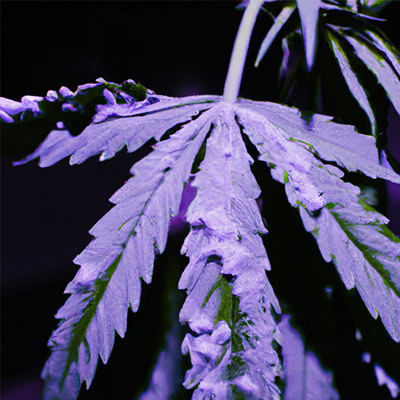
Controlling Humidity Levels to Lower the Risk of Cannabis Powdery Mildew Development
The cannabis plant is one of the most adaptable and helpful plants worldwide. Sadly, it is also susceptible to powdery mildew, a fungus-related illness that can seriously affect your crop.
This fungus can spread swiftly and thrives in humid settings if not adequately controlled. Fortunately, there are methods you can take to manage humidity levels and lower the possibility that your cannabis crop may become infected with powdery mildew.
Your cannabis plants' health depends on humidity because too much or too little moisture might result in problems like a powdery mildew infection. A healthy cannabis crop requires a relative humidity (RH) between 45 and 55%. Low levels below 40% will reduce air circulation and limit growth, while high levels over 70% will increase the likelihood of powdery mildew formation.
You must ensure your grow space has enough ventilation and keep all surfaces clean and free of any form of residue that can attract fungal spores to maintain ideal RH levels for your cannabis crop.
Additionally, it would be best to utilize dehumidifiers or fans inside your grow area to effectively remove extra moisture from the air without substantially lowering temperatures, which might have a detrimental impact on plant growth rates.
When growing cannabis indoors, you should also take the following precautions in addition to managing the humidity levels in your grow area:
Regularly check the temperature. Cannabis plants should be grown at 65 to 80 degrees Fahrenheit, with nighttime lows of no lower than 55 degrees.
Use suitable lighting systems, which help to improve ventilation in constrained spaces because LED lights produce less heat than HPS/MH bulbs;
Install carbon filters; absorbing extra moisture from moving air, carbon filters help maintain ideal relative humidity levels.
Avoid overcrowding since it can lead to stagnant air pockets where fungal spores can grow; and last,
Thoroughly clean all surfaces regularly to avoid the accumulation of organic debris that could promote the growth of fungi.
By according to these easy instructions, you can significantly lower the chance that your cannabis crops will become infected with powdery mildew while still preserving the best possible environmental conditions for optimum harvests.
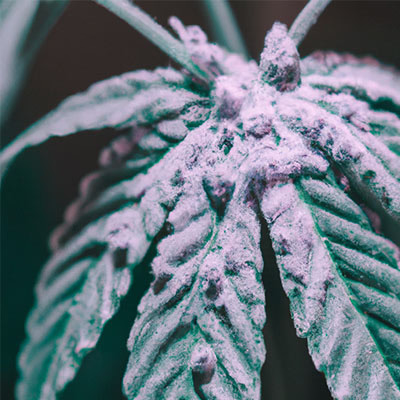
Considering the Use of Natural and Synthetic Fungicides to Treat PM on Cannabis Plants
Due to its numerous medical and recreational uses, the cannabis business has experienced a rise in popularity in recent years. But with every harvest comes the possibility of pests and diseases, which can seriously harm plants if left untreated.
Powdery mildew (PM), a typical pest of cannabis plants, can result in restricted development, decreased yields, and even plant death if left untreated. The good news is that growers can employ a variety of natural and synthetic fungicides to prevent or treat PM on their crops.
Let's start by looking at some natural fungicides that can cure PM on cannabis plants. Farmers have employed neem oil, a substance derived from the Indian neem tree, for millennia as a potent pesticide against various insect pests.
Neem oil has antifungal qualities that make it perfect for preventing powdery mildew outbreaks on cannabis crops since it acts by interfering with insects' reproductive cycles. Other naturally-derived products include cloves, cinnamon oil extractions, potassium bicarbonate solutions, garlic extracts, hydrogen peroxide sprays, baking soda sprays, and more.
When used correctly and by label directions, these have shown promise in combating fungal infections without endangering people or animals.
On the other hand, synthetic fungicides are made especially for treating fungus-related problems, like PM on cannabis plants; these frequently contain active ingredients like chlorothalonil or mancozeb that function by stopping spores from germinating while also eradicating existing colonies that are already present in infected tissue.
It's crucial for users to always carefully follow label directions when applying synthetic fungicides to their crops because they tend to be more potent than their natural counterparts.
No matter what kind of product you select. However, proper application is essential for achieving positive results when dealing with PM outbreaks on your cannabis crop. Timing is crucial because if you wait until symptoms show up, it might already be too late. After all, spores will have spread by the time treatment starts, potentially causing irreparable damage.
Therefore, ensure you identify any irregularities early enough by constantly monitoring your crop during its growing cycle every few days. This way, you should be able to spot any issues before they worsen and take rapid action that could end up saving you time and money in the long run.
Keep in mind that prevention is always preferable to treatment. As such, keep up with simple maintenance procedures like routinely clearing your grow space of fallen leaves and other debris and ensuring that plants are pruned in such a way as to allow for optimum air circulation. All aid in lowering the likelihood of infection taking hold, beginning with making the whole situation a lot easier to handle overall
